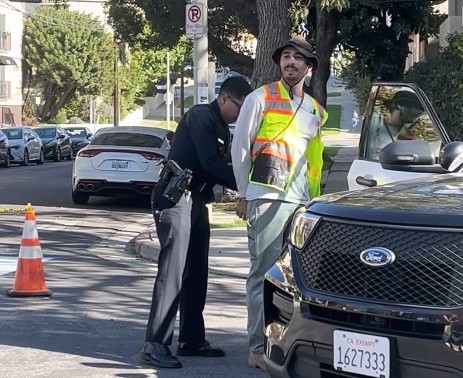Streetsblog had a chance today to ask the former Democratic chief of the House Transportation Committee, Rep. James Oberstar of Minnesota, about life since the 2010 election, when he lost by a hair to Republican Chip Cravaack. He said he's spending his post-Congress time traveling to France, getting paid to say things he used to say for free, and telling his four kids and seven grandkids the story of his wife, who succombed to breast cancer 20 years ago.
We also asked him for his thoughts about some major themes in transportation today.

On the “dissipation” of high-speed rail funds:
We reshaped Amtrak in the 2008 authorization, designating 11 corridors and creating a mechanism by which there could be competition from private sources and from state consortia, with Amtrak, to provide the passenger rail service in a particular corridor.
At first, I didn’t like that idea, but I spent a lot of time talking to Mr. Mica about it and as we talked, I said, “You know, that’s beginning to make more sense. We ought to challenge Amtrak. That’s a good idea; let’s put this into the bill.” And then we got consensus that high-speed should be defined as 110 mph, and that was in the bill. And we got a bill that George Bush signed!
So there was a structure against which to pit [the $8.5 billion in stimulus dollars for high-speed rail]. I thought that was going to happen. Instead, it was all put up for competition for various states to come forward and put a proposal on the table.
Wisconsin, for example: to Madison, Milwaukee, Chicago. That should have been done as part of the Midwest High-Speed Rail Initiative, with Chicago as the hub, south to St. Louis, east through Detroit to Cleveland and eventually to Cincinnati, and west to Minneapolis-St. Paul. That would have been one very defensible, manageable anchor.
The Northeast Corridor could have been another important anchor. The west coast, which is already underway: a third anchor to this system. And then some other amounts in the other corridors, depending on proposals that they would have and should have submitted to DOT.
Allowing pieces to be bid or requested by states dissipated the critical mass of investment. And I’m not saying that in hindsight – that was my concern at the time.
On the attack on Transportation Enhancements in Congress:
Transportation Enhancements was the pivotal point of transformation at the end of the interstate era -- an era in which travelers went where the road took them -- to the era in which users of our system had a say in their quality of transportation and where that road should go in the future and how their transportation experience should be managed.
Enhancements is the breakthrough transformation of our surface transportation system in the post-interstate era. If it were eliminated, it would erode public trust and acceptance of our surface transportation programs.
On how he would pay for his 2009 bill if he were defending it in this fiscally conservative Congress:
I would still insist on a restructuring of the categorical programs, to reduce those categories from 108 to four formula programs and to require the intermodalism that is depicted in my plan. And by law, you can require that the modal administrators meet monthly. There is nothing to impede the secretary of transportation from doing that now, from convening a monthly meeting of FRA and Federal Transit Administration, Maritime Administration, and all the rest. But they haven’t done that, regardless of administration.
So do it by law! You will develop a safety plan. What can highways learn from aviation and safety? What can waterways learn? What can highways learn from waterways? All of these need to be done intermodally.
So you give the public a sense of accomplishment, of simplicity and clarity, transparency of the program. And then you have freight corridors to deal with the farm-to-market movement of goods and inter-city goods movement, which is a segment of that bill, and then the metropolitan mobility and access provision that addresses the fact that 50 percent of vehicle miles traveled in this country are in urban areas and we are wasting $110 billion a year just sitting in traffic.
And then requiring states to develop plans, and defend them, and be accountable to them. It’s doable; we did that. I had a hearing every month on the stimulus investments and made state DOTs and USDOT and the wastewater treatment agencies and the aviation authority all come and say, what did they do with their money, how did you invest it, what are the benefits from it? So you include that accountability, clarity, and performance.
And then project delivery – in the current law it’s not widely understood. But I crafted 42 pages of legislative language to expedite project delivery. The result: 47 projects – these are big ones, these are $100 million-and-above-sized projects – have had a 36 month reduction in permitting, which means you’re almost cutting in half the time it’s taking for permitting -- without denigrating the environment, without denigrating historical preservation, without overriding local permitting interests and requirements.
So, you require better performance, better project delivery, and then you can ask the public. If I were still there, I’d be saying, now we go to the public and say, “We have funded our surface transportation system with the user fee, so you have a claim on the future investments, by which you pay at the pump and now you have something in which you can have confidence that it will be used effectively." There will be much greater accountability.
Then you can appeal for an increase in the user fee or a combination of funding mechanisms, which we provided for in the metropolitan access and mobility provisions.





